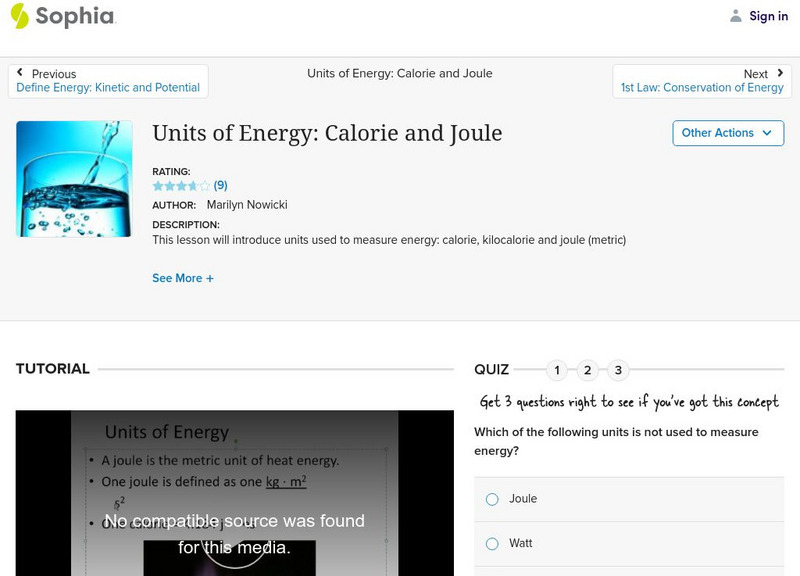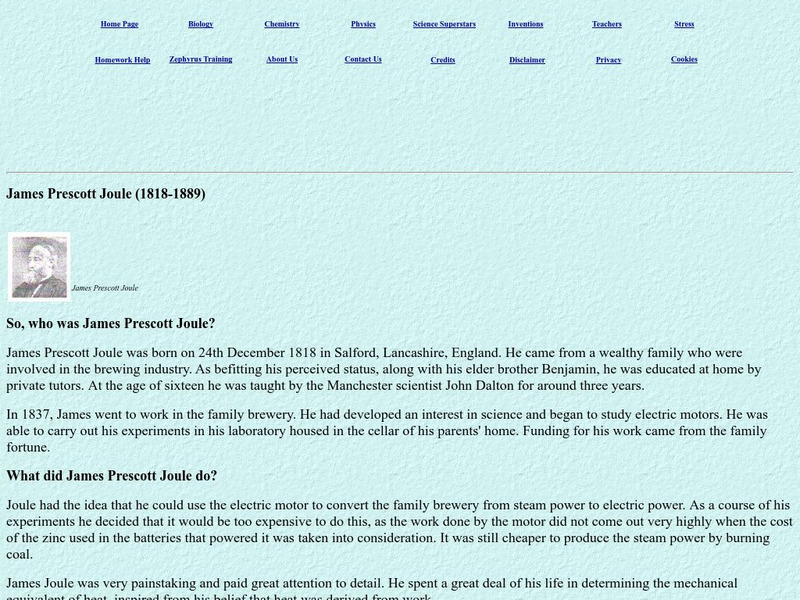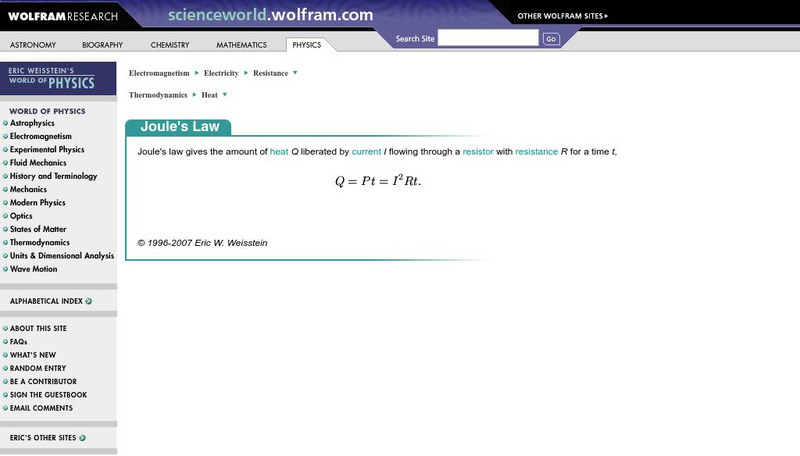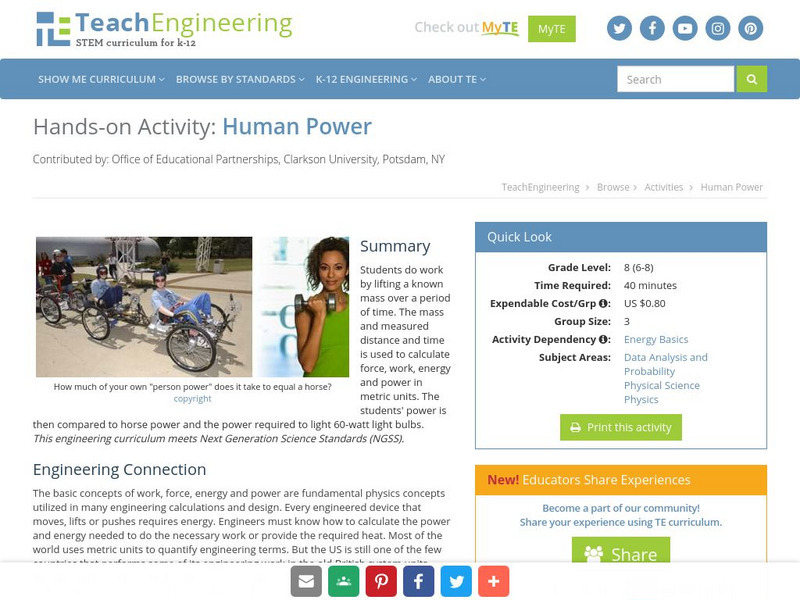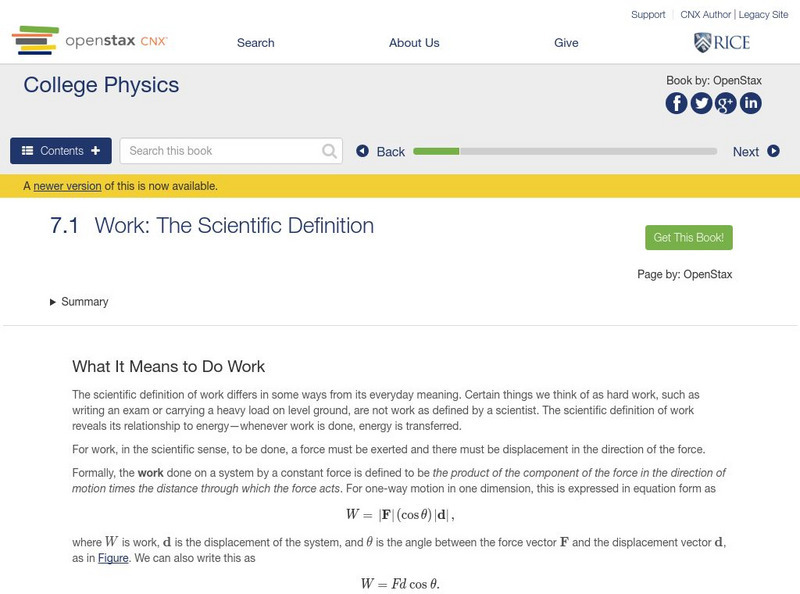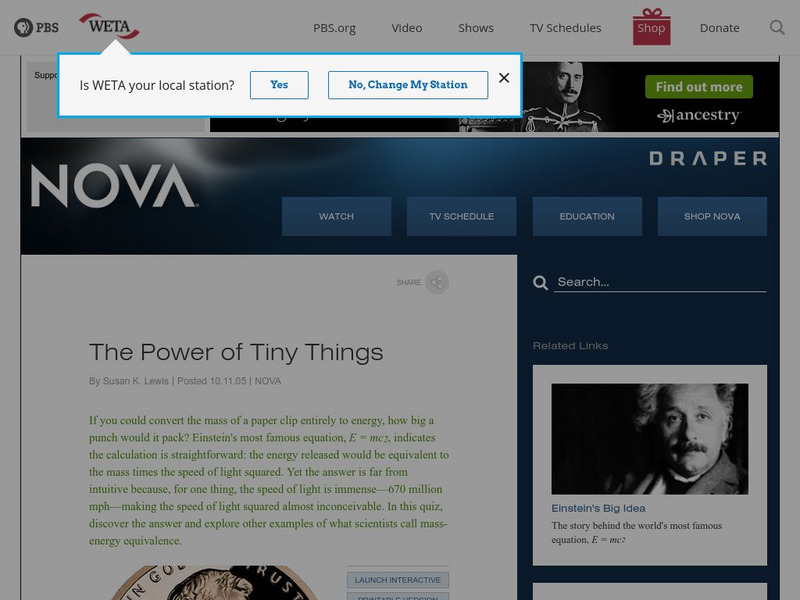Sophia Learning
Sophia: Units of Energy: Calorie and Joule
A narrated screencast which discusses various units used to measure energy: calorie, kilocalorie, and joule. [2:22]
Other
Zephyrus James Prescott Joule
Short biographical site dedicated to James Prescott Joule (1818-1889).
University of Waterloo (Canada)
University of Waterloo: James Prescott Joule
Lists the most important scientific contributions of James Prescott Joule. Provides some biographical details. Part of a set of History of Thermodynamics course notes.
Wolfram Research
Wolfram Science World: Joule's Law
This site briefly defines Joule's Law. A formula is provided and links to related terms.
Wikimedia
Wikipedia: James Prescott Joule
Wikipedia offers a biographical sketch of James Prescott Joule discusses his contributions to the world of science, including the conservation of energy.
Curated OER
University of Waterloo: James Prescott Joule
Lists the most important scientific contributions of James Prescott Joule. Provides some biographical details. Part of a set of History of Thermodynamics course notes.
Curated OER
University of Waterloo: James Prescott Joule
Lists the most important scientific contributions of James Prescott Joule. Provides some biographical details. Part of a set of History of Thermodynamics course notes.
Curated OER
University of Waterloo: James Prescott Joule
Lists the most important scientific contributions of James Prescott Joule. Provides some biographical details. Part of a set of History of Thermodynamics course notes.
Curated OER
Zephyrus James Prescott Joule
Short biographical site dedicated to James Prescott Joule (1818-1889).
Physics Aviary
Physics Aviary: Mechanical Equivalent of Heat Lab
This lab is designed to have students look at a greatly simplified version of James Joule's experiment showing the conversion of mechanical energy to heat.
Other
Easyphysics: Chapter 14 Basic Circuit
Learners investigate circuits. Some topics examined are a series circuit, parallel circuit, and Joule?s law. The resource includes practice problems with solutions and a chapter quiz.
Ducksters
Ducksters: Physics for Kids: Kinetic Energy
Kids learn about kinetic energy in the science of physics. The energy of motion can be calculated using mass and velocity. The standard unit is the joule. How it is different from potential energy.
Ducksters
Ducksters: Physics for Kids: Potential Energy
Kids learn about potential energy in the science of physics. The energy of position and state can be calculated using mass, gravity, and height. The standard unit is the joule. How it is different from kinetic energy.
Vision Learning
Visionlearning: Mechanics: Thermodynamics
Learn about the First Law of Thermodynamics and the importance of heat flow in machines and chemical reactions.
TeachEngineering
Teach Engineering: Human Power
Students do work by lifting a known mass over a period of time. The mass and measured distance and time is used to calculate force, work, energy and power in metric units. The students' power is then compared to horse power and the power...
CK-12 Foundation
Ck 12: Resistors in Series and Parallel
[Free Registration/Login may be required to access all resource tools.] The differences between series and parallel circuits are highlighted. Provides an in-depth look at how to solve problems about circuits and resistors. Includes a...
Science Education Resource Center at Carleton College
Serc: Bot Ec: Energy Released in an Earthquake
A magnitude 8.5 earthquake (such as the 1964 Good Friday earthquake in Alaska) releases about 1x1018 joules of energy. The atomic bomb exploded over Hiroshima released about 1.5x1013 joules of energy. How many Hiroshima bombs would one...
TED Talks
Ted: Ted Ed: How Does Work, Work?
In this video, Peter Bohacek explains the interplay between work and power and how it can be seen in the functioning of a clock. [4:31] Followed by a short quiz and a list of additional resources to explore.
OpenStax
Open Stax: Work: The Scientific Definition
In the following interactive students will begin to explain how an object must be displaced for a force on it to do work. They will also explain how relative directions of force and displacement determine whether the work done is...
Wikimedia
Wikipedia: Specific Heat Capacity
This Wikipedia page offers a brief description of the thermodynamics term, "Specific heat capacity."
Sophia Learning
Sophia: Work: Lesson 2
This lesson will explain the concept of work, and show that it can be calculated using force and distance.
PBS
Pbs Nova: The Power of Tiny Things
Have you ever wondered what would happen if you converted the mass of a paper clip into an amount of energy? In this informative quiz, discover the answer, and explore other examples of mass-energy equivalence.
Virginia Commonwealth University
Virginia Commonwealth University: Power Questions
Good use of linking to provide definitions of power along with examples and probing questions. Created by Robert H. Gowdy, physics instructor at VCU.
Other popular searches
- Work Force Joules
- Joules of Energy
- Science Work Joules
- Joules Chemistry
- Science Joules
- Work Joules
- Tera Joules
- Joules Grace
- Joules Grave
- Measure Units for Joules
- Calculating Work Joules
- Calories to Joules
